Reptiles and Amphibians
Media
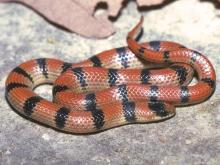
Species Types
Scientific Name
Sonora semiannulata semiannulata
Description
The variable groundsnake is a small species with smooth, shiny scales and highly variable coloration. In Missouri, it is mostly restricted to open, rocky hillsides of the southwestern corner of the state.
Media
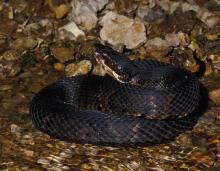
Species Types
Scientific Name
Agkistrodon piscivorus
Description
The cottonmouth is named for the cotton-white lining of its mouth, which it opens widely when alarmed. This dangerously venomous, semiaquatic snake occurs in the southeastern corner of Missouri, with a spotty distribution in the Ozark Region.
Media
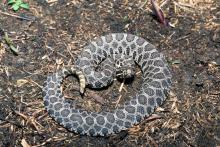
Species Types
Scientific Name
Sistrurus tergeminus tergeminus
Description
The prairie massasauga is a medium-sized rattlesnake associated with bottomland prairie habitats in north-central and northwestern Missouri. This endangered species is shy, reclusive, and nonaggressive.
Media
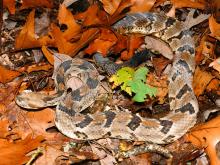
Species Types
Scientific Name
Crotalus horridus
Description
Missouri’s largest venomous snake, the timber rattlesnake, is dangerously venomous, but there are few cases of rattlesnake bites in our state. It frequents rough country, is mostly nocturnal in summer, and few Missourians ever encounter it.
Media
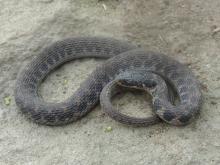
Species Types
Scientific Name
Clonophis kirtlandii
Description
Kirtland’s snake is extremely rare and occurs in only a few states in the Midwest. It lives in crayfish burrows in grassland habitats that are damp and near a stream or wetland. It is restricted in Missouri to a few northeastern counties.
Media
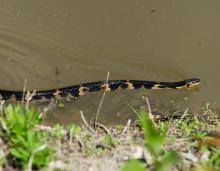
Species Types
Scientific Name
Nerodia fasciata confluens
Description
The broad-banded watersnake is a semiaquatic snake with broad, irregularly shaped bands that can be brown, reddish brown, or black and are separated by yellow or gray. This nonvenomous species is restricted to the southeastern corner of the state.
Media
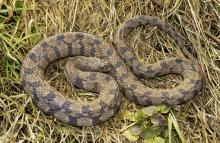
Species Types
Scientific Name
Nerodia rhombifer rhombifer
Description
The northern diamond-backed watersnake is our largest watersnake. It has numerous diamond-shaped light markings along the back. It occurs in the Bootheel and north along the Mississippi River, and in much of northern and western Missouri. It doesn’t occur in the Ozarks or in much of central-eastern Missouri.
Media
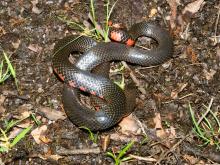
Species Types
Scientific Name
Farancia abacura reinwardtii
Description
The western mudsnake is a harmless swamp dweller of Missouri's Bootheel lowlands. It is burdened with misinformation and imaginative folklore. But it turns out that fact is more interesting than fiction.
Media
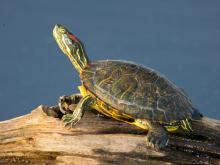
Species Types
Scientific Name
Trachemys scripta elegans
Description
The red-eared slider is an attractive aquatic turtle with yellow pinstripes and red ears. It is commonly seen basking on logs or rocks and occurs statewide, except for a few northern counties.
Media
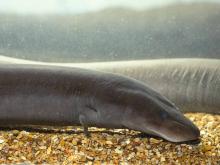
Species Types
Scientific Name
Amphiuma tridactylum
Description
The three-toed amphiuma is an eel-like, completely aquatic salamander. It has very small forelimbs and hind limbs, each with three tiny toes. In Missouri it’s found only in the Bootheel region.
See Also
About Reptiles and Amphibians in Missouri
Missouri’s herptiles comprise 43 amphibians and 75 reptiles. Amphibians, including salamanders, toads, and frogs, are vertebrate animals that spend at least part of their life cycle in water. They usually have moist skin, lack scales or claws, and are ectothermal (cold-blooded), so they do not produce their own body heat the way birds and mammals do. Reptiles, including turtles, lizards, and snakes, are also vertebrates, and most are ectothermal, but unlike amphibians, reptiles have dry skin with scales, the ones with legs have claws, and they do not have to live part of their lives in water.





















